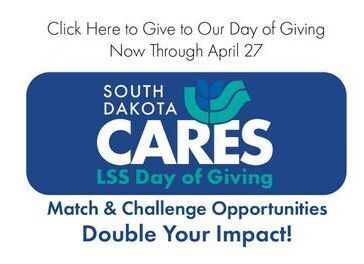Overcoming Childhood Trauma
This May Have Saved My Life
“If I don’t do this, I’ll never be able to move on and live my life free.” Lisa reminded herself as she arrived at LSS Behavioral Health in Rapid City. She took a deep breath. She was ready.
When Lisa stepped into her therapist’s office, she had two goals—find a way to heal from the past and reduce anxiety to move forward.

At 56, Lisa knew she needed to deal with the abuse experienced when she was young. She spent decades trying to avoid the past but it had a way of bubbling to the surface when she least expected it. “I can no longer quiet the pain and stop the memories from coming back,” were among the first words she said to her therapist, Rachel Shepherd, Director of LSS Behavioral Health Services.
After a few sessions, Rachel knew EMDR, Eye Movement Desensitization and Reprocessing, would likely help Lisa heal. EMDR is a newer, evidence-based therapy that can help process traumatic memories to alleviate stress and anxiety.
“Lisa was nervous about facing her emotions surrounding her childhood, but she was eager to feel and to be better. Together we talked about what might happen in her brain and body,” says Rachel. “I explained that the things she experienced in her childhood and the emotional pain she feels now are real and sometimes need different techniques to help ourselves let go of them.”
EMDR works to recount traumatic memories and experiences in incremental doses while helping the person maintain focus on a particular stimulus such as handheld buzzers or lights that trigger bilateral stimulation and rapid eye movement. “The vibration of the buzzer or the lights, keep the individual grounded in their current environment—sitting in the room with me in that moment and assuring them that they are safe,” explains Rachel.
LSS therapists are trained in EMDR as a response to increases in reported suicide rates in South Dakota. This technique is effective in helping reduce post-traumatic stress disorder and other trauma-based symptoms.“Reaching and processing trauma on a deeper level is important to the long-term success for people who carry the burden of difficult past experiences,” Rachel explains.
After a few sessions using EMDR, Lisa was able to verbally process the abuse from her childhood which she struggled to do for many years.
“There were tears which is expected. As we moved through the exercise, Lisa’s breaths grew slower and deeper. She was able to maintain control, relax and feel what she needed to feel,” Rachel continues. “This process is really tough. I was amazed by Lisa’s resilience. I don’t think I had ever seen such determination in this stage of the therapeutic process prior to this moment.”
“It’s a beautiful thing to witness somebody break free from the impact of their trauma and feel better,” says Rachel. “This experience with Lisa was a big ‘a-ha’ moment about the effectiveness of EMDR and the importance of staying on the cutting edge of technology and techniques.”
At the final session, Lisa felt at peace with her past. “I will never justify the acts of what happened to me, but I no longer feel like they are in control or define who I am,” she explained. “Thank you for everything you have done. I think this may have saved my life.”
The Cutting Edge Care fund helps make moments like this possible. Your gift will help provide training to LSS staff in new, effective, evidence-based techniques so they have the tools to best serve individuals and families as they work to heal. Plus, during South Dakota CARES your gift is matched, giving you a chance to double your impact.


